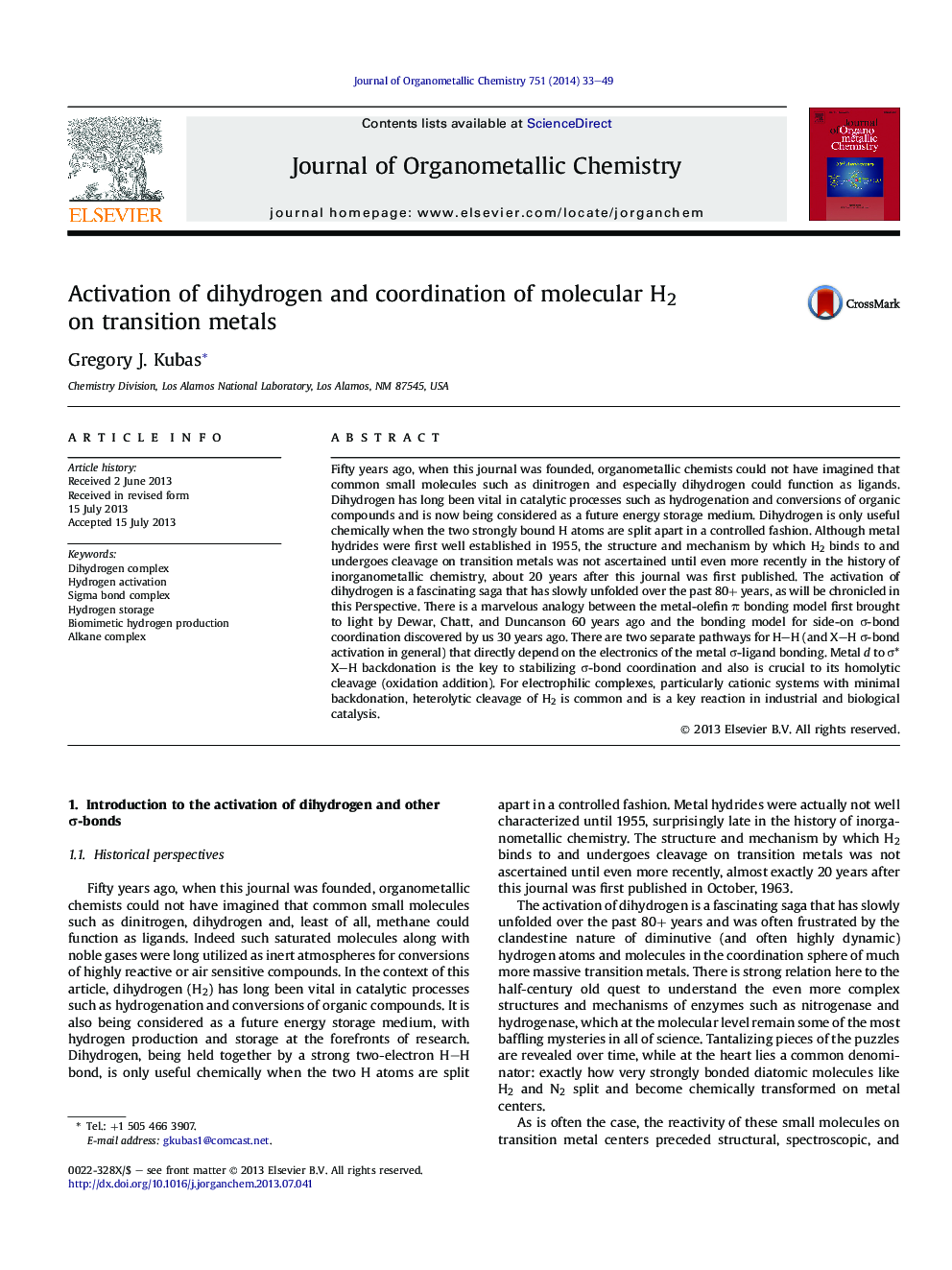| کد مقاله | کد نشریه | سال انتشار | مقاله انگلیسی | نسخه تمام متن |
|---|---|---|---|---|
| 1324262 | 1499889 | 2014 | 17 صفحه PDF | دانلود رایگان |

• A historical perspective of activation of dihydrogen on transition metal complexes.
• The discovery of dihydrogen complexes.
• Structure, bonding, and reactivity of dihydrogen complexes.
• Extraordinary dynamic behavior of hydrogen on metals.
• Relevance of dihydrogen coordination to biomimetic hydrogen production and storage.
Fifty years ago, when this journal was founded, organometallic chemists could not have imagined that common small molecules such as dinitrogen and especially dihydrogen could function as ligands. Dihydrogen has long been vital in catalytic processes such as hydrogenation and conversions of organic compounds and is now being considered as a future energy storage medium. Dihydrogen is only useful chemically when the two strongly bound H atoms are split apart in a controlled fashion. Although metal hydrides were first well established in 1955, the structure and mechanism by which H2 binds to and undergoes cleavage on transition metals was not ascertained until even more recently in the history of inorganometallic chemistry, about 20 years after this journal was first published. The activation of dihydrogen is a fascinating saga that has slowly unfolded over the past 80+ years, as will be chronicled in this Perspective. There is a marvelous analogy between the metal-olefin π bonding model first brought to light by Dewar, Chatt, and Duncanson 60 years ago and the bonding model for side-on σ-bond coordination discovered by us 30 years ago. There are two separate pathways for H–H (and X–H σ-bond activation in general) that directly depend on the electronics of the metal σ-ligand bonding. Metal d to σ* X–H backdonation is the key to stabilizing σ-bond coordination and also is crucial to its homolytic cleavage (oxidation addition). For electrophilic complexes, particularly cationic systems with minimal backdonation, heterolytic cleavage of H2 is common and is a key reaction in industrial and biological catalysis.
A historical perspective is presented on the coordination and activation of dihydrogen on transition metals. Splitting of side-on bonded dihydrogen can occur via homolytic or heterolytic mechanisms depending on the electronics at the metal. Catalytic hydrogenation or formation of H2 can occur by both pathways.Figure optionsDownload as PowerPoint slide
Journal: Journal of Organometallic Chemistry - Volume 751, 1 February 2014, Pages 33–49